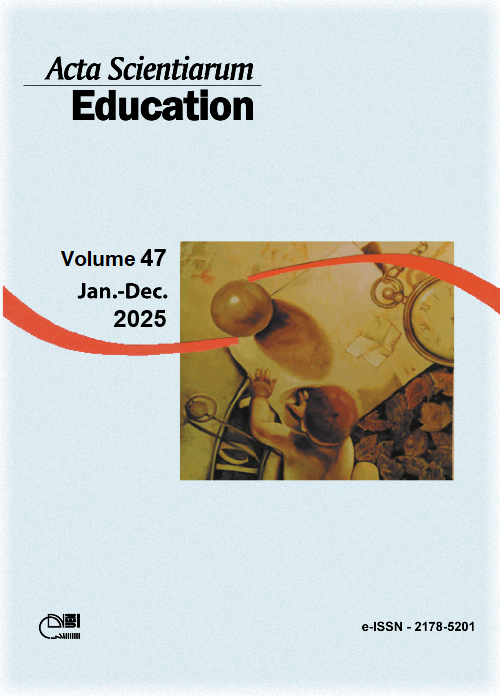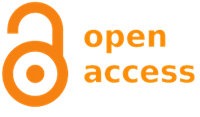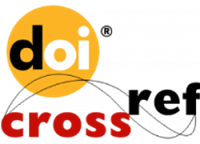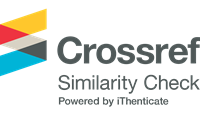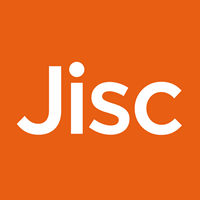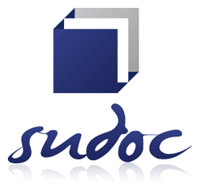Multi-group analysis of willingness to integrate AI Chatbots in teaching and learning of physics
Abstract
The integration of artificial intelligence chatbots/technologies into teaching-learning process improves students’ learning outcome and reduces teachers’ pedagogical stress in classroom. The present study focused on the In and Pre-service physics teachers’ willingness to integrate AI Chatbots in teaching and learning of physics. 45 In-service and 55 Pre-service physics teachers were engaged in the study. Attitude towards AI and Technology Readiness Index’ components were correlated with their willingness to integrate AI Chatbots in teaching. Three research instruments were adapted and used to elicit information from the respondents. Partial Least Square of Structural Equation Model (PLS-SEM) was employed and the data collected were analyzed using SmartPLS software version 4.0.9.2. The multi-group analysis of the In and Pre-service physics teachers were run separately and together to determine the difference in the willingness to integrate AI Chatbots in teaching-learning process. The findings of the study revealed that the affective, behavioural and cognitive components of the attitude towards AI significantly correlated with the respondents’ willingness to integrate AI Chatbots in teaching-learning process. The study concluded that attitude towards AI influences their willingness to integrate AI Chatbots to teaching-learning process.
Downloads
References
Adiguzel, T., Kaya, H., & Cansu, F. (2023). Revolutionizing education with AI: exploring the transformative potential of ChatGPT. Comtemporary Educational Technology, 15(3), 1-13. https://doi.org/10.30935/cedtech/1315
Barkirtas, H., & Akkas, C. (2020). Technology readiness and technology acceptance of academic staffs. International Journal of Management Economics and Business, 16(4), 1043-1058. https://doi.org/.10.17130/ijmeb.853629
Blut, M., & Wang, C. (2019). Technology readiness: a meta-analysis of conceptualization of the construct and its impact on technology usage. Journal of the Academy of Marketing Science, 48, 649-669. https://doi.org/10.1007/s11747-019-00680-8
Chatterjee, S., & Bhattacharjee, K. K. (2020). Adoption of artificial intelligence in higher education: a quantitative analysis using structural equation modelling. Education and Information Technologies, 25, 3443-3463. https://doi.org/10.1007/s10639-020-10159-7
Chiu, Y.-T., Zhu, Y.-Q., & Corbett, J. (2021). In the hearts and minds of employees: a model of pre-adoptive appraisal toward artificial intelligence in organizations. International Journal of Information Management, 60, 102379. https://doi.org/10.1016/J.IJINFOMGT.2021.102379
Conner, M., Wilding, S., Harreveld, F. van, & Dalege, J. (2020). Cognitive-affective inconsistency and ambivalence impact on the overall attitude-behaviour relationship. Personality & Social Psychology Bulletin, 47(4), 673-687. https://doi.org/10.1177/0146167220945900
Dimitriadis, G. (2020). Evolution in education: Chatbots. Homo Virtualis, 3(1),47-54. https://doi.org/10.12681/homvir.23456
Durak, H. Y., & Onan, A. (2023). An examination of studies on the use of Chatbots technology in the field of education. In 5th International Conference on Applied Engineering and Natural Sciences, 121-123. https://as-proceeding.com/
Fernoaga, V., Stelea, G.-A., Gavrila, C., & Sandu, F. (2018). Intelligent education assistant powered by chatbots. Proceedings of 14th International Conference E-learning and Software for Education. Bucharest. https://doi.org/10.12753/2066-026x-18-122
Gonda, D. E., & Chu, B. (2019). Chatbots as a learning resource? Creating conversational bots as a supplement for teaching assistant course. Proceedings of International Conference on Engineering, Technology and Education (TALE), 1-5. https://doi.org/10.1109/TALE48000.2019.9225974
Jarrar, Y., Awobamise, A. O., & Sellos, P. S. (2020). Technological readiness index (TRI) and the intention touse smartphone apps for tourism: a focus on inDubai mobile tourism app. International Journal of Data and Network Science, 4, 297-304. https://doi.org/10.5267/j.ijdns.2020.6.003
Julian, R. K., & Dhini, A. (2022). The role of technology readiness towards acceptance on smartwatch use. In Proceedings of the 7th North American International Conference on Industrial Engineering and Operations Management. 1990-1999. https://doi.org/10.46254/na07.2022449
Lin, C., Huang, A. Y. Q., & Yang, S. J. H. (2023). A review of AI-driven conversational chatbots implementation methodologies and challenges (1999-2022). Sustainability, 15(5), 4012. https://doi.org/10.3390/su15054012
Liu, L., Subbareddy, R., & Raghavendra, C. G. (2022). AI intelligence chatbot to improve students learning in the higher education platform. Journal of Interconnection Networks, 22(2), 1-17. https://doi.org/10.1142/s021926592143
Mageira, K., Pittou, D., Papasalouros, A., Kotis, K., Zangogianni, P., & Daradoumis, A. (2022). Educational AI Chatbots for content and language integrated learning. Applied Science, 12(7), 3239. https://doi.org/10.3390/app12073239
Malik, R., Shrama, A., Trivedi, S., & Mishra, R. (2021). Adoption of Chatbots for learning among university students: role of perceived convenience and enhanced performance. International Journal of Emerging Technologies in Learning, 16(18), 200-212. https://doi.org/10.3991/ijet.v16i18.24315
P, M. G. C., Srivastava, A., Chakraborty, S., Ghosh, A., & Raj, H. (2021). Development of information technology telecom chatbot: an artificial intelligence and machine learning approach.In Proceedings of 2nd International Conference on Intelligent Engineering and Management [ICIEM] (pp. 216-221).https://doi.org/10.1109/ICIEM51511.2021
Parasuraman, A. (2000). Technology readiness index(Tri): a multiple-item scale to measure readiness to embrace new technologies. Journal of Service Research, 2(4), 307-320. https://doi.org/10.1177/109467050024001
Parasuraman, A., & Colby, C. L. (2015). An updated and streamlined technology readiness index: TRI 2.0. Journal of Service Research,18(1), 59-74. https://doi.org/10.1177/1094670514539730
Prananta, A. W., Susanto, N., Purwantoro, A., & Fuadah, N. (2023). ChatGPT artificial intelligence integration in science learning media: systematic literature review. Jurnal Penelitian Pendidikan IPA, 9(7), 315-321. https://doi.org/10.29303/jppipa.v9i7.4386
Riza, A. N. I., Hidayah, I., & Santosa, P. I. (2023). Use of chatbots in e-learning context: a systematic review.In Proceedings of IEEE World AI loT Congress (AlloT), Seattle, WA. https://doi.org/10.1109/AIIOT58121.2023.10174319
Sandu, N., & Gide, E. (2019). Adoption of AI-Chatbots to enhance student learning experience in higher education in India. In 18th International Conference on Information Technology Based Higher Education and Training (ITHET), Magdeburg, DE. https://doi.10.1109/ithet46829.2019.8937382
Schepman, A., & Rodway, P. (2020). Initial validation of the general attitudes towards artificial intelligence scale. Computers in Human Behavior Reports, 1, 100014. https://doi.org/10.1016/J.chbr.2020.100014
Suh, W., & Ahn, S. (2022). Development and validation of a scale measuring student attitudes toward artificial intelligence. SAGE Journal, 12(2). https://doi.org/10.1177/21582440221100463
Supriyadi, E., & Kuncoro, K. S. (2023). Exploring the future of mathematics teaching: insight with ChatGPT. Union Jurnal Ilmiah Pendidikan Matematika, 11(2), 305-316. https://doi.org/10.30738/union.v11i2.14898
West, C. G. (2023). AI and the FCI: Can ChatGPT project an understanding of introductory physics? ArXiv. https://doi.org/10.48550/arXiv.2303.01067
Wolf, L. J., Haddock, G., & Maio, G. R. (2020). Attitudes. Oxford Research Encyclopedia of Psychology.https://doi.org/10.1093/acrefore/9780190236557.013.247
Copyright (c) 2025 Wasiu Olayinka Yahaya, Abdulrasaq Oladimeji Akanbi, Abdulkadir Aishat Yusuf

This work is licensed under a Creative Commons Attribution 4.0 International License.

This work is licensed under a Creative Commons Attribution 4.0 International License.
DECLARATION OF ORIGINALITY AND COPYRIGHTS
I declare that this article is original and has not been submitted for publication in any other national or international journal, either in part or in its entirety.
The copyright belongs exclusively to the authors. The licensing rights used by the journal are the Creative Commons Attribution 4.0 (CC BY 4.0) license: sharing (copying and distributing the material in any medium or format) and adaptation (remixing, transforming, and building upon the material thus licensed for any purpose, including commercial purposes) are permitted.
It is recommended that you read this link for more information on the subject: providing credits and references correctly, among other crucial details for the proper use of the licensed material.



